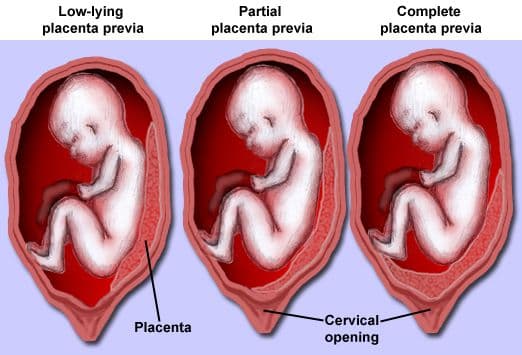Gauging Placental Health via Ultrasound
Ultrasound
Obie Editorial Team

The placenta is the organ that supplies all the oxygen and nutrients the growing fetus needs, it produces important hormones, but it also removes waste from the fetus. The fetus is attached to the placenta via the umbilical cord. Placement and health of the placenta can be determined during a routine pregnancy ultrasound. The uterus, placenta, and fetus grow constantly during pregnancy, so the position of the placenta tends to change somewhat from the second trimester to the third trimester.
The placenta and the uterus
During a pregnancy ultrasound, the position of the placenta is noted. The first ultrasound to check the placenta is typically scheduled about the 18th to 20th-week gestation. The placenta is usually positioned away from the cervix but it may be growing abnormally closer to the cervix. The placenta takes up about 50-percent of the uterine lining at this time.
As the pregnancy progresses, the placenta grows, but not at the same rate as the uterus grows. The placenta typically raises away from the cervix as the uterus grows. By the 40th week gestation, the placenta is attached to between 17- and 25-percent of the uterine lining.
Placenta previa
If the placenta maintains connection at the lower part of the uterus, covering the cervix or growing close to it, this is known as placenta previa or low-lying placenta. The only path of vaginal delivery is blocked by the placenta so a C-section is required. Placenta previa can cause hemorrhage leading to a life-threatening situation for mother and child. Factors that increase the risk of placenta previa include:
- Smoking during pregnancy
- Previous C-section
- Multiple pregnancy
If you’ve had a previous C-section, your risk of placenta previa increases with each C-section. For instance, having two previous C-sections results in an increased risk of placenta previa of about 1.8-percent. However, having four previous C-sections increases your risk by 10-percent. At the same time, women with placenta previa and prior cesarean sections are also at increased risk of a condition called 'placenta accreta' where the lining between placenta and the uterus, the Nitabuch layer, is missing.
Ultrasounds for increased risk
If a pregnant woman falls into the increased risk category, additional pregnancy ultrasounds may be scheduled in the latter stages of the pregnancy. If by the last month of pregnancy, the placenta has not yet moved away from the cervix it is a good indication that a C-section is required. A pregnancy is considered full-term at the 37th week of gestation. If placenta previa is noted on a pregnancy ultrasound, the obstetrician may choose to schedule the ultrasound before labor begins to reduce the risk of hemorrhage.
Other placenta complications
The pregnancy ultrasound can also be used to diagnose other placenta complications, including:
- Cysts on the placenta
- Improper umbilical cord insertion
- Placenta accreta, increta, percreta
- Calcification of the placenta
- Mass in the placenta
- Succenturiate placenta (additional piece of the placenta)
- Retained placenta after birth
The pregnancy ultrasound is an exciting time for many parents-to-be. In addition to predicting fetal gender and measuring the size of the fetus, technicians and doctors are also taking a careful look at the health and positioning of the placenta.








